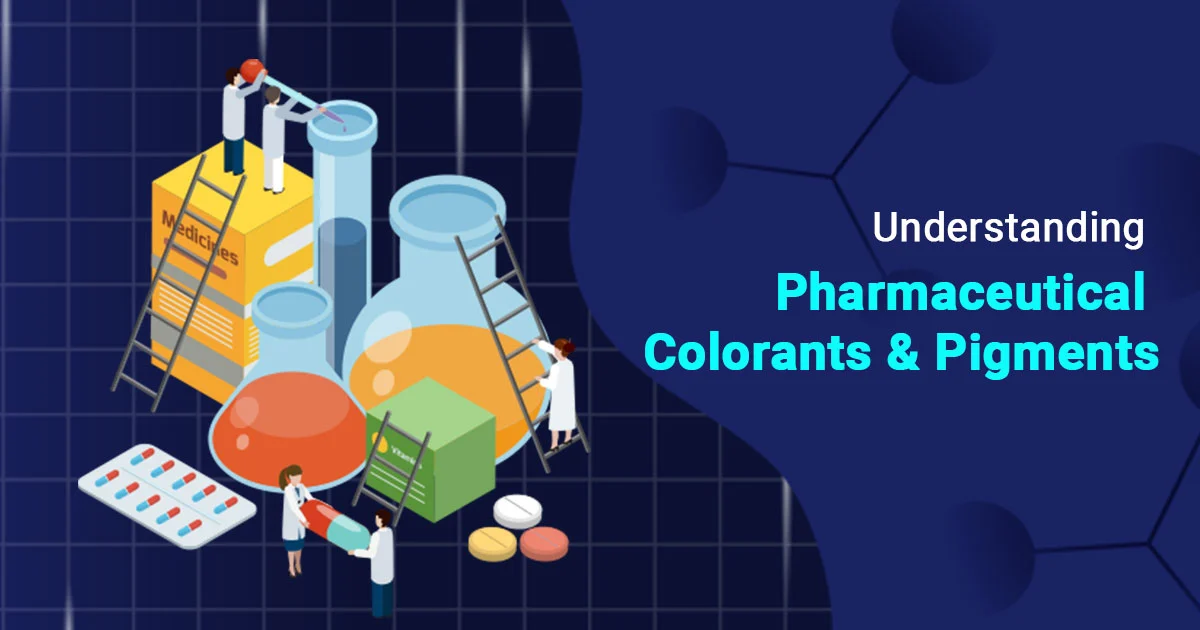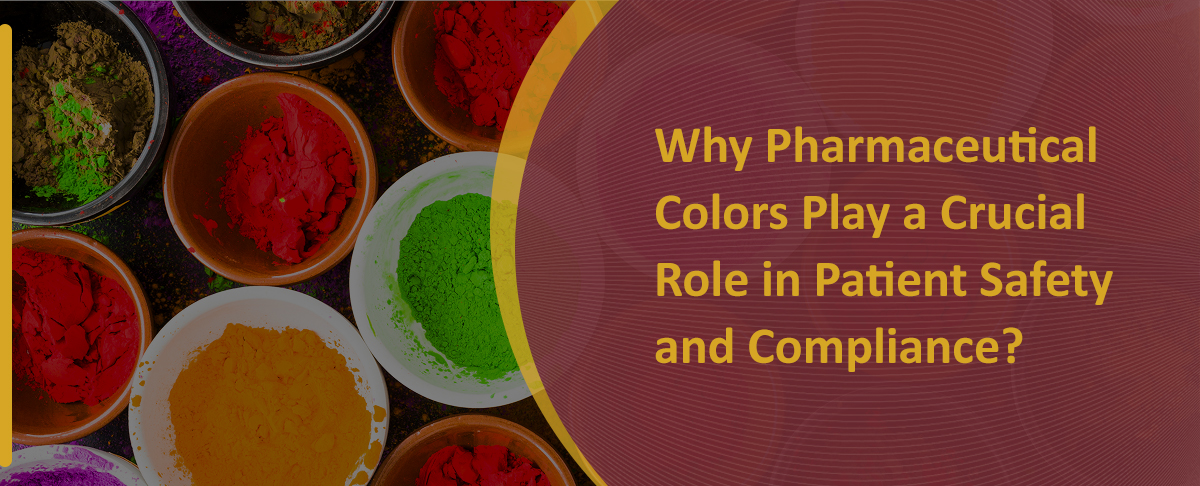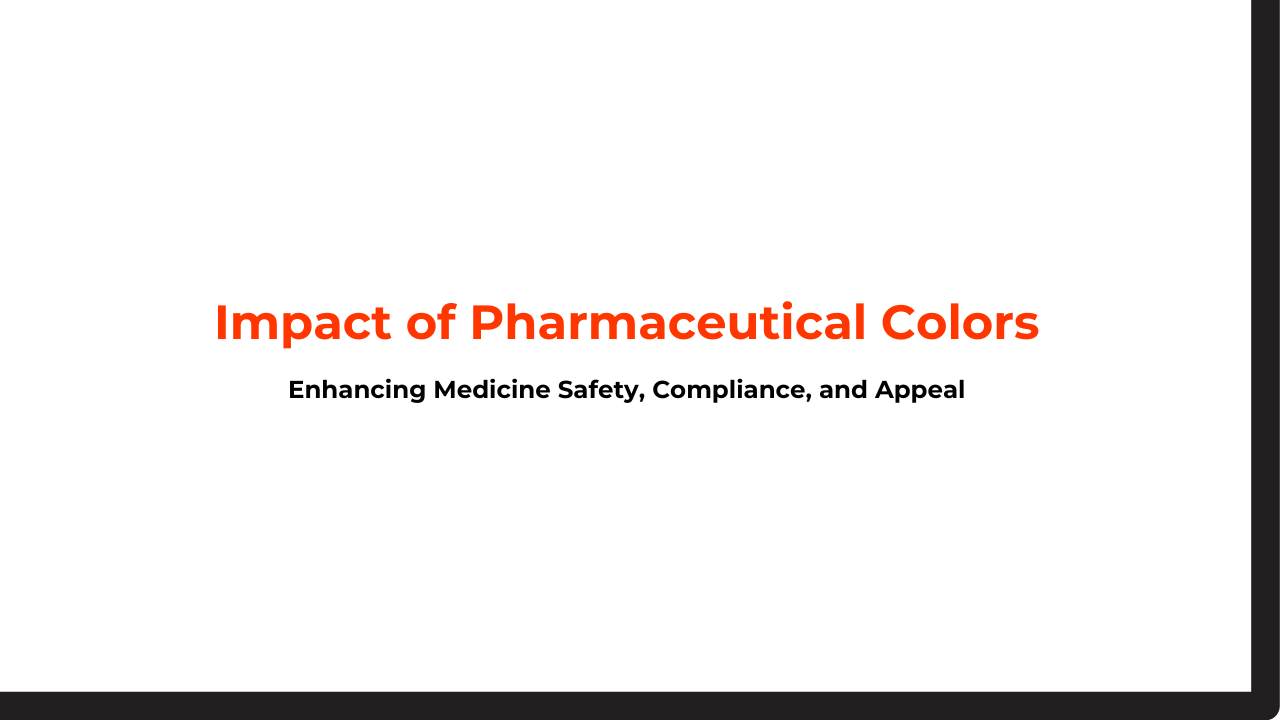Introduction
Color helps in pharmaceuticals by making medicines look appealing, easy to identify, and easier for patients to take as prescribed.
Color helps distinguish products, indicate dosages, and build consumer trust, whether a vibrant tablet or a softly tinted syrup. Behind this visual appeal lies a specific class of additives known as pharmaceutical colorants.
Formulators, on purpose, add these substances to drug formulations for color. They choose them carefully to ensure safety, stability, and regulatory compliance. This blog will explore pharmaceutical colorants, their grouping, and why they matter more than you might think.
What are Pharmaceutical Colorants?
Pharmaceutical colorants are pigments or dyes used in pharmaceutical formulations to provide or enhance color. These colorants don’t just make medicine look good—they help patients tell medications apart, avoid taking the wrong dose, and stick to their treatment plan.
Manufacturers incorporate pharmaceutical colorants into various dosage forms, from tablets and capsules to creams and injectables. They can also aid in branding, allowing pharmaceutical companies to create visually distinct products that are easy to recognize.
Formulators choose these colorants based on their ability to dissolve, safety, stability, and ability to work with active pharmaceutical ingredients (APIs). They must also meet strict regulatory standards, ensuring they are non-toxic and suitable for consumption or application.
Read More: Impact of Pharmaceutical colors on medicine
Types of Pharmaceutical Colorants
Pharmaceutical colorants are broadly classified based on their origin and regulatory designation. Here’s how they are typically categorized:
a. Natural Colorants
Derived from plant, animal, or mineral sources, natural colorants include substances like:
- Curcumin (from turmeric)
- Beetroot red (from beets)
- Chlorophyll (from green plants)
These are gaining popularity due to consumer demand for “clean label” products, although they may have limitations in terms of stability and intensity.
b. Synthetic Colorants
These are artificial compounds designed to produce consistent, vibrant colors. They include:
- FD&C dyes (approved for food, drug, and cosmetic use)
- D&C dyes (approved for medicines and cosmetics)
- Lakes (insoluble pigment forms of dyes)
Regulators must strictly control synthetic colorants due to potential toxicity concerns, even though these colorants offer excellent stability and color vibrancy performance.
c. Regulatory Types
Colorants are also classified based on approval and intended use:
- FD&C (Food, Drug, and Cosmetic): Approved for all uses, including ingestion.
- D&C (Drug and Cosmetic): Approved for external or topical use.
- Regulators usually allow exempt colors, which are natural colorants not listed under FD&C or D&C rules, in certain cases.
Pharmaceutical manufacturers must select colorants from these categories according to the intended application and local regulatory guidelines.
Conclusion
Pharmaceutical colorants are more than just visual enhancers; they are vital to modern drug design. From helping patients identify their medications to enabling manufacturers to brand and tell apart their products, these colorants carry functional and psychological value.
As the industry continues evolving, we’re seeing a shift toward natural and sustainable colorants. However, the choice between natural and synthetic still hinges on performance, safety, and compliance.
Understanding the types and roles of pharmaceutical colorants allows for better-informed decisions in formulation development, regulatory adherence, and, ultimately, patient care.




